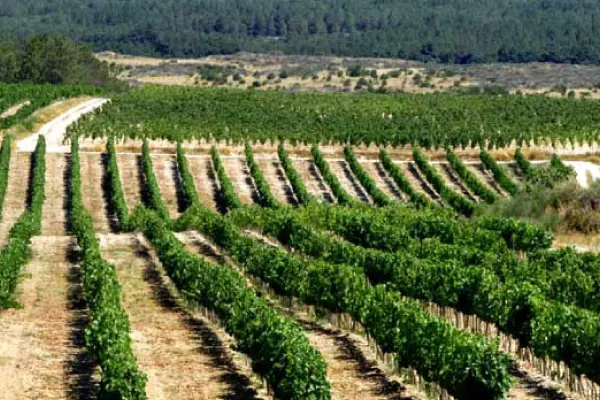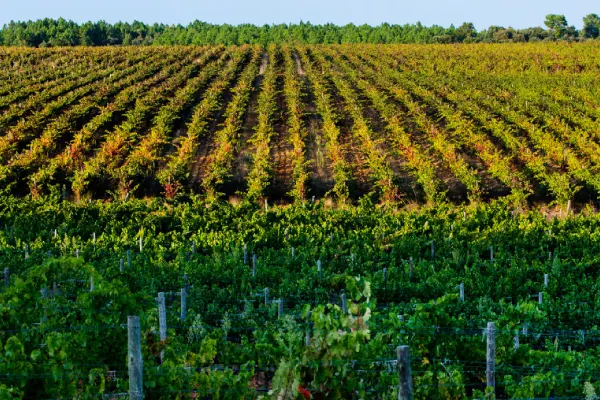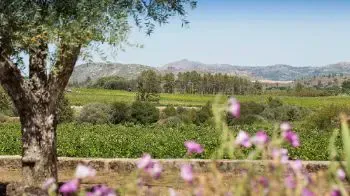The wine region of Beira Interior is located in the heart of the interior of Portugal, in the most mountainous region of the mainland territory. It has a wine-growing historical past that dates back to the foundation of Portuguese nationality, it has about 16 000 hectares of vineyards and a wide variety of grape varieties.
The Beira Interior Designation of Origin was created on November 2, 1999. In recent years, there has been a great evolution regarding the increase in the number of producers and the quality of the wines. It is a region that wants to assert itself as a region of excellence and quality in wine production.

Image: Agronegócios
Sub-Regions of the Beira Interior Wine Region
This region is divided into three sub-regions: Castelo Rodrigo, Pinhel and Cova da Beira, and within each of the sub-regions different varieties are planted.
Types of wine and grape varieties from the Beira Interior Wine Region
In this region, rich and firm herbaceous and floral red wines are produced from national varieties such as Touriga Nacional and Rufete, however, they are often complemented with international varieties such as Syrah, Merlot and Cabernet Sauvignon. The white wines are much fresher than in the south of Portugal, usually with notes of citrus and wild flowers that are good young and that gain complexity over time.
The predominant white grape varieties are Arinto, Fonte Cal, Fernão Pires and Síria, and the red ones are Rufete, Tinta Roriz and Touriga Nacional, with a regular presence of very old vines.
In Castelo Rodrigo, the following varieties predominate: Aragonez, Bastardo, Marufo, Rufete, Touriga Nacional, Baga, Tinta Carvalha, Pilongo and Trincadeira. And in white ones, Malvasia Fina, Síria, Tamarez, Bical, Arinto (Pedernã), Malvasia Rei, Rabo de Ovelha and Vital.
In the sub-region of Pinhel, the red grape varieties Bastardo, Marufo, Rufete, Touriga Nacional, Baga, Tinta Carvalha, Pilongo and Trincadeira are planted. And the whites Bical, Arinto, Fonte Cal, Malvasia Fina, Malvasia Rei, Rabo de Ovelha, Síria and Tamarez.
Finally, in Cova da Beira, the predominant red varieties are Aragonez, Baga, Bastardo, Jaen, Marufo, Moreto, Castelão, Rufete, Tinta Carvalha, Touriga Nacional, Trincadeira and Alfrocheiro. And in white, Alicante Branco, Arinto, Bical, Fonte Cal, Malvasia Fina, Malvasia Rei, Rabo de Ovelha and Síria and Tamarez.
Terroir of the Beira Interior Wine Region
The climate of this region reveals an extreme continental influence, with great variations in temperature, short, hot and dry summers and long, very cold winters.
With regard to soils, these are mostly granitic in nature, with some presence of schist and although it is not very common, there is some sandy presence.
In the sub-regions of Castelo de Rodrigo and Pinhel there is the same terroir, despite being separated by mountains with peaks of more than a thousand meters in altitude. On the other hand, Cova da Beira expresses different characteristics, having its own soils close to granitic mountains, such as Estrela and Gardunha.
Serra da Estrela is very important in the context of this wine region. It is the highest mountain range in mainland Portugal, a very striking feature that gives Beira Interior a more continental climate than in the Dão region, further west and beyond the mountains.

Image: Quinta do Cardo
Pairing Beira Interior wines with food
Red wines from the Beira Interior region, being wines with a marked flavor and aroma, go well with sauces made for red meats, such as the classic Bolognese. As the meat adds juiciness and a little fat to the dish, a more concentrated red helps to clear the palate.
Its white wines are light and fresh, as we have already mentioned. The ideal is to be drunk young and they go well with salads, fish or seafood dishes, and can also be drunk as an aperitif. Another good option to accompany the whites is also the pesto sauce, which is traditionally made with fresh basil, pinoli, pecorino and olive oil. For having such a combination of flavors so characteristic, nothing better than fresh and light white wines, but with enough perfume to support the presence of herbs.
 Portugal
Portugal Spain
Spain France
France Germany
Germany United Kingdom
United Kingdom Monaco
Monaco



